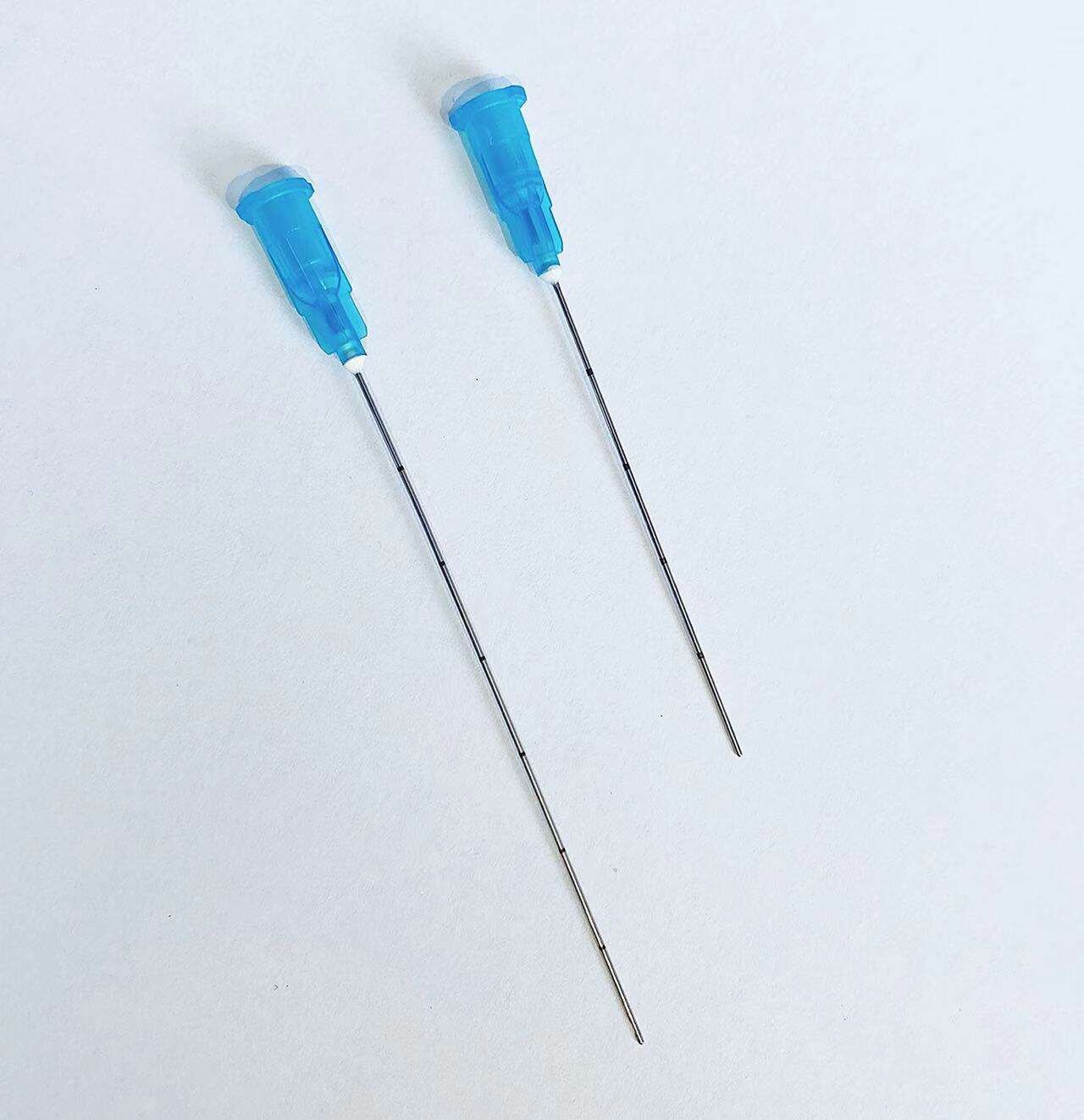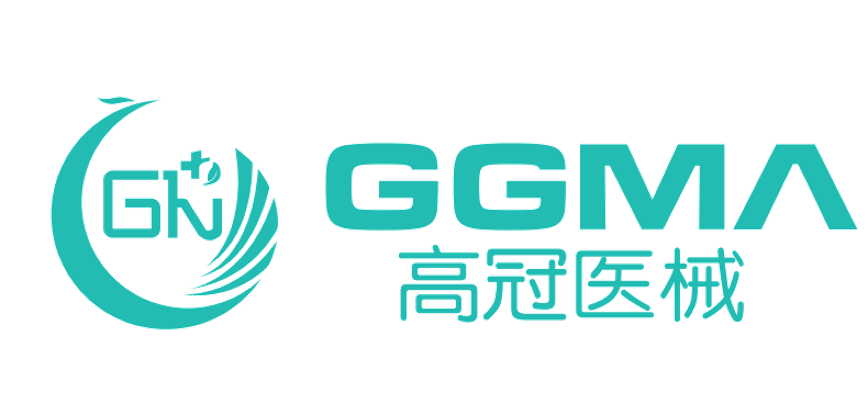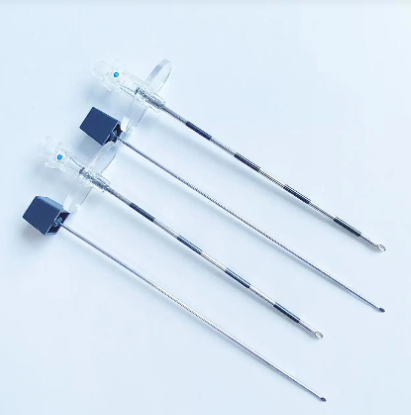Reducing Needlestick Injuries with Blunt Tip Needles
Statistics on Sharps Injuries in Healthcare
Needlestick injuries are still widely recognized as a major hazard in health-care settings, not only causing injury but also possible long-term sequelae to the health care worker. According to the Centers for Disease control and Prevention (CDC) healthcare providers experience an average of approximately 385,000 needle stick injuries annually. These types of events can cause significant anxiety and also exposure to bloodborne viruses including HIV and hepatitis. The economic consequences of such injuries are significant, with U.S. hospitals paying $2 billion annually for costs related to needlestick injuries. This significant expenditure emphasises the immediate requirement of efficient interventions in safety procedures for health workers and costs for healthcare systems.
How Blunt Tips Minimize Accidental Punctures
Blunt needles have a clever design to minimize the risk of needle sticks making them a safer option than traditional sharp needles. Its distinctive round tip reduces the risk of penetration, sharply reducing needlestick injuries. Reports demonstrate that the use of blunt tipped needles (no sharp) in certain applications has greatly reduced occurrences of this nature. Blunt tips are recognised universally as being the safest. Unlike conventional needles, these blunt tips also offers a two-fold benefit, reducing the incidence of injury and creating an environment where nurses can concentrate more on patient care and less on protection against needlesticks.
Case Studies from Surgical Environments
There has been a significant decrease in the prevalence of the needlestick injuries when the blunt tip needles are used in surgical setting. For instance, at practices with the such needles, medical staff have seen a substantial decrease in sharps-related cases after introducing these needles. These developments are complimented with rigorous training programs to facilitate the proper use of blunt tip needles among caregivers. When statistics from surgery centers that switched to blunt tip needles are considered, the decrease in injuries is highly significant, a testimony to the effectiveness of these devices as a safety measure. These cases mark clear examples of the advantages of bevelless blades not only to patient outcomes but also to the overall safety of healthcare providers.
By introducing blunt tip needles, healthcare settings are not only enhancing worker safety but also contributing to a more cost-effective and supportive workplace environment.
Preventing Bloodborne Pathogen Exposure
Link Between Sharps Injuries and Disease Transmission
The association between sharps injuries and bloodborne pathogen transmission is documented in multiple authoritative sources including the Centers for Disease Control and Prevention (CDC). These injuries have the potential to transmit serious diseases, including HIV, hepatitis B, and hepatitis C, thus emphasizing the importance of prevention measures. According to CDC data, there are approximately 385,000 medically trained personnel in the United States-based hospital setting that are exposed to sharps related injuries each year. This is the shocking total of the general threat of disease exposure to the existing pool of healthcare workers, who are exposed to such every minute of their day - a strong case for the necessity of highest precautions within healthcare premises.
Role of Non-Bevelled Tips in Reducing Risk
Blunt tip needles, also known as non-bevelled needles, are instrumental in minimizing the risk of accidental injury and subsequent exposure to pathogens, which is associated with conventional bevelled needles. Blunt needles design is less piercing the soft tissue, and so significantly reduces the risk of needle-stick injuries. These claims are corroborated through scientific studies which report significantly reduced pathogen exposure in the clinical environment when blunt tips are used. Experts promote using these safer options, noting that the lower potential risk makes blunt tips a necessary adjunct in successful disease transmission prevention programs.
Compliance with OSHA Bloodborne Pathogens Standard
Compliance to OSHA Bloodborne Pathogens Standard is Essential to Medical Facility Safety. Blunt tip needles are an important factor in compliance by reducing the potential for staff to be exposed to hazardous materials. Failure to comply has serious legal and monetary repercussions. Sharp blunted needles assist where facilities are looking to meet OSHA standards, and protect your work environment. Their application represents the best in terms of reducing exposure to bloodborne pathogens in accordance with OSHA while at the same time promote safety in the workplace.
Enhancing Safety in Surgical Settings
Neutral Zone Protocols for Sharps Handling
The use of Neutral Zone protocols in the operating room setting is important for improving safety, especially when blunt tip needles are utilized. These systems establish set locations in which sharps (e.g., needles) can be safely placed or retrieved, minimizing potential accidental injury. Systems such as Kaiser Permanente have implemented these interventions with great success and demonstrated a marked decrease in surgical sharps exposure, as reported in recent risk assessment studies. Hence, these protocols work better if there is good team work and communications between the surgical team members so all members of the team are aware of the sharps zone and aseptic handling is practiced.
Combining Blunt Tips with Double-Gloving Strategies
The combination of blunt tip needles and double-gloving is an efficient method of reducing risk in the surgical setting. This combination greatly decreases the risk of needlestick injury and the need for secondary protective measures for potentially hazardous body fluid exposures. This appears to be supported by statistical data, which demonstrated decreasing incidents of NSIs in operation theatres that are adopting such strategies. Surgical team feedback additionally supports valuable impact of this combination, evidencing, as it does, improvements in safety and reduction in the frequency of injury among HCWs, resulting in a safer environment for surgery.
Impact on OR Team Confidence and Workflow
Adopting blunt tip needles for surgery has a big impact on OR team confidence. Risk of injury is also minimized with the use of these safer needle devices which builds overall team confidence and enables more concentration on patient care and workflow. This newfound confidence equals increased efficiency, as the staff is able to work more efficiently when they are not constantly worrying about needlestick injuries. Psychological positives presented in qualitative research and expert testimony have included greater team working, improved patient safety and a more efficient surgical procedure due to the use of blunt needles.

Meeting Regulatory and Safety Standards
OSHA's Needlestick Safety Requirements
OSHA Needlestick Safety Requirements are crucial to safeguard healthcare workers against needlestick injuries. The use of blunt tipped needles is a key factor included in these guidelines as they lessen the chance of injury resulting as it is more difficult for them to puncture the skin as a sharp needle would. Compliance with OSHA is about more than just adherence; it’s about protecting healthcare employees. Facilities that fail to accommodate these requirements are at risk for such staffsuffering accidents and subsequent legal liabilities. However, violations of OSHA regulations can be costly to facilities and demonstrate a need for all facilities to comply with OSHA regulations to protect staff and to avoid fines, as illustrated by the multiple citations received for failure to use safe needle devices at a California healthcare facility.
ANSI/ISEA 105 Recommendations
The ANSI/ISEA 105 guidelines are essential for advancing safety of sharps handling, including use of blunt tip needles within the health care industry. Implementation of these recommendations is critical to increase safety in the workplace by preventing injury to healthcare staff members. Studies have shown that facilities that implement ANSI/ISEA perform far better on sharps injuries. Standards such as these have been adopted by groups such as the American College of Surgeons, saying they have the potential to make work safer. Investigative Hospital-Based Case Studies These guidelines stand as evidence of the widespread acceptance of ANSI/ISEA standards which work to protect employees from the hazards associated with sharps accidents in the workplace.
Hospital Accreditation Implications
The use of blunt tip needles has significant implications for hospital accreditation, especially in terms of meeting safety and compliance mandates. The adoption of safer needles (blunt) can create a favorable image for hospitals, and add legitimacy to the accreditation process with a higher reputation for safety. The statistical data indicates, there is a significant relationship between needle safety practices and the accreditation results in the favorable direction which guides to use of the creative solutions. With hospitals working towards accreditation, the inclusion of blunt tip needles becomes the competitive advantage, showing dedication to patient and staff safety and establishing credibility in the healthcare arena.
Improving Efficiency in Medical Procedures
Reducing Procedure Interruptions
Blunt-tipped needles dramatical-ly prevent work stoppages due to sharps injuries during medical procedures. Such injuries may result in an unplanned "pause" while staff mobilize to manage the incident and this can disrupt flow and scheduling of treatment. For instance, time expended to address a sharps injury can be as much as 30 minutes per incidence, affecting total patient throughput. With a blunt-tip needle selection, facilities will be able to keep the flow of work running smoothly with a focus on both their efficiency and patient satisfaction during a blunter disruption.
Cost Savings from Fewer Injury-Related Incidents
In addition, by reducing the "needle stick" exposure that can place a financial burden on a healthcare facility, utilization of a blunt tipped needle affords a considerable cost savings. Estimates are that a needlestick injury may cost a facility $500 to $3,000 each time it occurs, when including the testing, treatments, and administrative tasks for which facility personnel must account. Hospitals can offset those costs by switching to safer devices, such as blunt tip needles. In addition, there are long-term financial rewards, as facilities use fewer resources to care for injuries and are able to redirect money to patient care and service enhancements.
Optimizing Sharps Disposal Workflows
Blunt tip needles simplify sharps exposure processes, ultimately increasing safety and efficiency in the medical/hospital environment. They help lower the risk of accidental injuries during disposal and provide a more secure and relatively quick way of disposal. For example, hospitals that favor blunt safety devices tend to have lower disposal accidents, and such are evidence of increasing safety precautions. Education and training of staff concerning best practices on appropriate disposal is necessary, including clearly labeling sharps containers and immediately disposing of it after procedure, which reinforces further the advantages of the blunt tip needle.
FAQ Section
What are blunt tip needles?
Blunt tip needles are designed to reduce the risk of accidental punctures with their rounded edges, providing a safer alternative to traditional sharp needles.
How do blunt tip needles improve safety in healthcare?
These needles minimize the risk of needlestick injuries, which can lead to bloodborne pathogen exposure, helping to protect healthcare workers and reduce anxiety related to potential infections.
Why are blunt tip needles important in surgical environments?
In surgical settings, blunt tip needles reduce the incidence of needlestick injuries, enhance team confidence, and improve patient care while aligning with safety protocols.
How do blunt tip needles contribute to cost savings?
By minimizing injury-related incidents, these needles reduce healthcare costs associated with treating needlestick injuries, leading to significant financial savings.
Are blunt tip needles compliant with OSHA standards?
Yes, blunt tip needles help in meeting OSHA's Bloodborne Pathogens Standard by reducing the likelihood of injuries and ensuring employee safety.
Table of Contents
-
Reducing Needlestick Injuries with Blunt Tip Needles
- Statistics on Sharps Injuries in Healthcare
- How Blunt Tips Minimize Accidental Punctures
- Case Studies from Surgical Environments
- Preventing Bloodborne Pathogen Exposure
- Link Between Sharps Injuries and Disease Transmission
- Role of Non-Bevelled Tips in Reducing Risk
- Compliance with OSHA Bloodborne Pathogens Standard
- Enhancing Safety in Surgical Settings
- Neutral Zone Protocols for Sharps Handling
- Combining Blunt Tips with Double-Gloving Strategies
- Impact on OR Team Confidence and Workflow
- Meeting Regulatory and Safety Standards
- OSHA's Needlestick Safety Requirements
- ANSI/ISEA 105 Recommendations
- Hospital Accreditation Implications
- Improving Efficiency in Medical Procedures
- Reducing Procedure Interruptions
- Cost Savings from Fewer Injury-Related Incidents
- Optimizing Sharps Disposal Workflows
- FAQ Section

